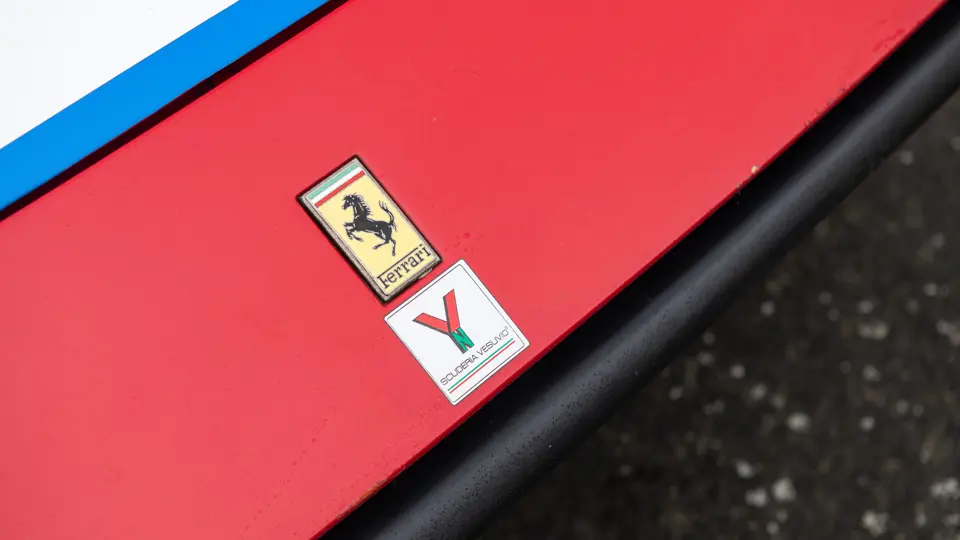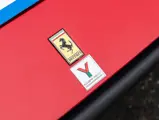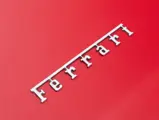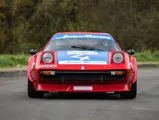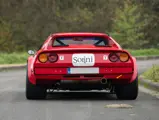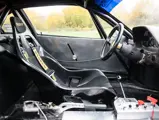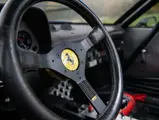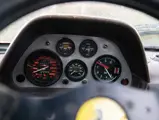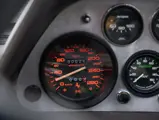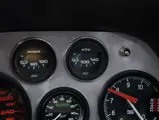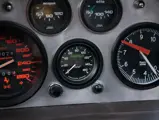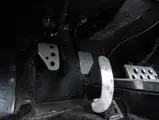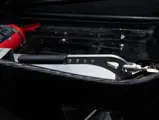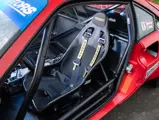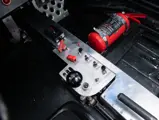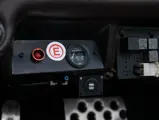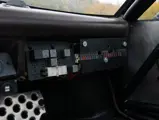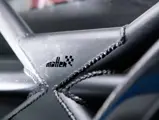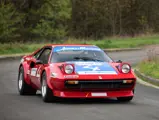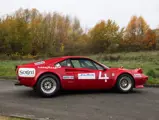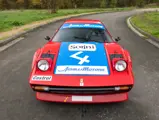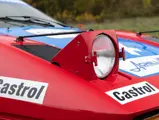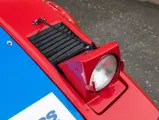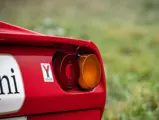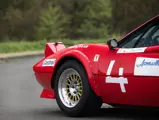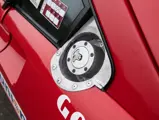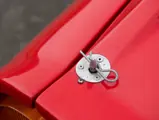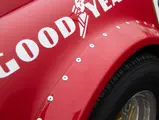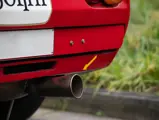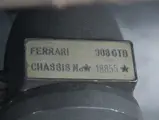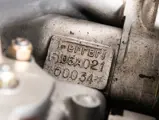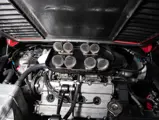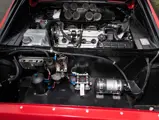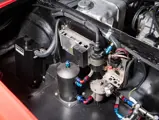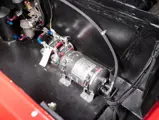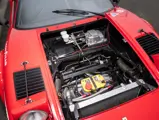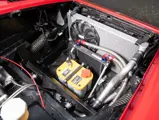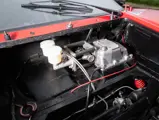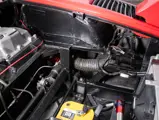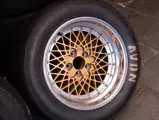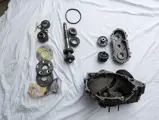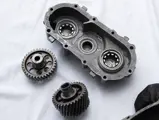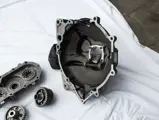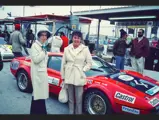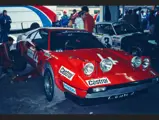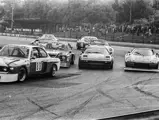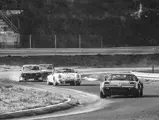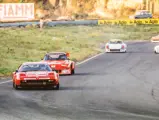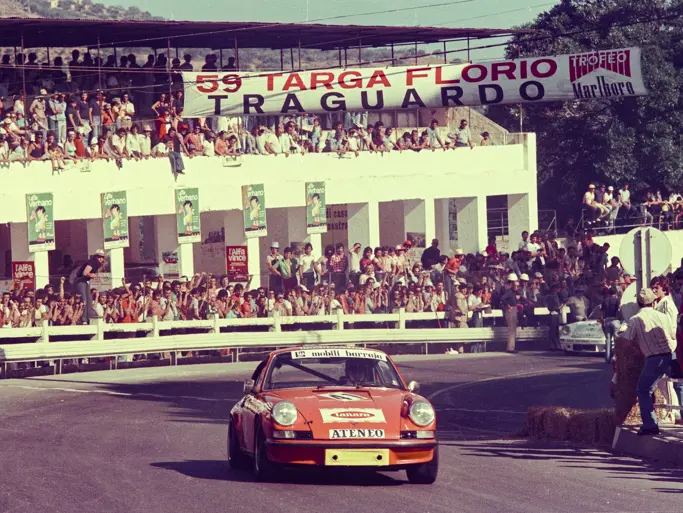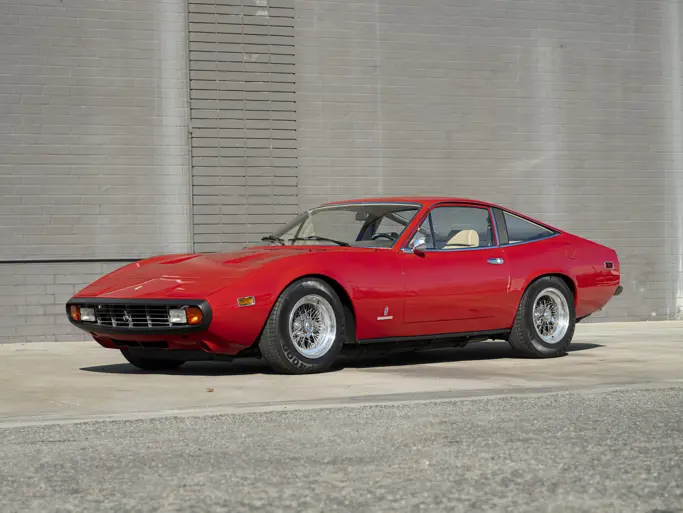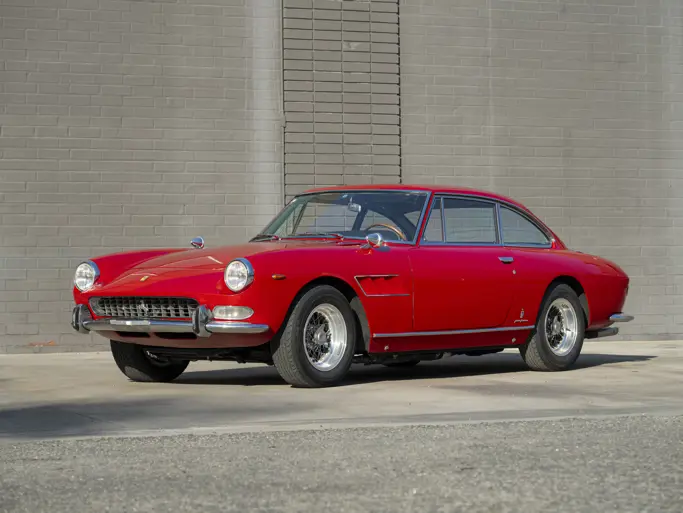
1976 Ferrari 308 GTB 'Vetroresina' Group 4 by Scaglietti
{{lr.item.text}}
€750,000 - €950,000 EUR | Not Sold
{{bidding.lot.reserveStatusFormatted}}
- One of four 308 GTBs modified by the Facetti brothers to Group 4 specifications
- Debuted at the 24 Hours of Daytona by the Italian Jolly Club; campaigned by Bob Bondurant, Dino Mallet, Romeo Camathias, and Sergio Rombolotti
- Driven to victory in multiple races by Carlo Facetti, the 1978 Campionato Italiano Group 4 Champion
- Subject to mechanical restoration in 2018 by Ferrari specialist Roelofs Engineering and Gipimotor, costing in excess of €200,000
- Accompanied by FIA Historical Technical Passport, 10 spare wheels, and assorted gearbox components
- Une des quatre 308 GTB modifiées par les frères Facetti aux spécifications Groupe 4
- Première course aux 24 Heures de Daytona, avec le Jolly Club italien ; pilotée par Bob Bondurant, Dino Mallet, Romeo Camathias et Sergio Rombolotti
- Menée à plusieurs reprises à la victoire par Carlo Facetti, Champion d'Italie Groupe 4 en 1978
- A fait l'objet d'une restauration mécanique en 2018 par les spécialistes Ferrari Roelofs Engineering et Gipimotor, pour plus de 200 000 €
- Accompagnée d'un Passeport Technique Historique FIA, de 10 roues de rechanges et de composants de boîte de vitesses
Launched at the 1975 Paris Motor Show as a replacement for the outgoing Dino 246 GT, the Scaglietti-built Ferrari 308 GTB featured a mid-mounted 2.9-litre V-8 engine coupled to a five-speed manual gearbox.
The earliest and more desirable examples were bodied in glass-reinforced plastic as an alternative to their later, steel-bodied counterparts. Among those to see the 308 GTB’s competitive potential were Italian brothers, Carlo and Giuliano Facetti from Bresso, who converted four examples to Group 4 specification. Their 308s became famed for their rarity and pre-date the Michelotto-built Group 4 and Group B cars that emerged in the early-1980s.
This Ferrari 308 GTB, chassis 18855, left the factory in early 1976 finished in Rosso Chiaro, and was delivered new to a dealer in Bolzano, Italy. By 1977, the Facetti brothers had acquired the Ferrari, and converted it to Group 4 specifications. For its first outing, the car was entered into the 1978 24 Hours of Daytona, driven by Bob Bondurant, Dino Mallet, Romeo Camathias, and Sergio Rombolotti. They qualified in 32nd place, but—due to alternator failure—the car was forced to retire after 82 laps.
Following Daytona, chassis 18855 was fielded in the 1978 Campionato Italiano Gruppo 4. Piloted by Carlo Facetti—making this the only Facetti-built 308 to be driven by Carlo—the Ferrari was immensely successful. Facetti found success early in the season, taking victory at the Autódromo dell’Umbria in the fourth round of the championship. His winning ways continued in rounds five and six, finishing 1st at both the Misano World Circuit and at the Autódromo de Pergusa. For the seventh round of the championship, at the Giro d’Italia, Facetti opted to field his Porsche 935 in Group 5 rather than his 308, and he finished 2nd overall. For the eighth and final round at Vallelunga, Facetti reprised chassis 18855, heading the pack in Group 4 and confirming his position as 1978 Campionato Italiano Group 4 Champion.
The hotshoe returned to the championship in 1979 for the 6 Hours of Mugello. Though the Ferrari was initially entered into the event, Facetti contested the race in his Porsche, again bringing the 935 home in 2nd. The Ferrari’s next outing took place on 27 May at Havířov International; despite strong qualifying that saw him start the race from the front row, an accident on the fourth lap forced the 308’s retirement. Entry lists and period photographs on file show that the car also raced at the Autodromo Nazionale di Monza and Vallelunga Circuit later that year, though the results of each race are unknown.
By mid-1980, the 308 GTB had been sold to Ciro Nappi, the founder of Scuderia Vesuvio. On 5 October, Sergio Romboloti—who was a listed driver for the car at its 24 Hours of Daytona debut—raced the car in the Trofeo Leopoldo Carri at the Autodromo Nazionale di Monza. Nappi would go on to race the Ferrari at Vallelunga twice the following year, winning his class on 18 October. Ciro and his brother Piero continued to compete with the car, finally selling the Ferrari to the consigning owner in 2018, following 38 years of ownership.
With the ‘Vetroresina’ body well-preserved, the owner opted to have chassis 18855 mechanically restored shortly after buying the car. The engine and gearbox were rebuilt by the Ferrari specialist, Roelofs Engineering in the Netherlands, with the suspension and other components restored in Belgium by Gipimotors. The restoration adhered to Group 4 FIA regulations and in October 2018, an FIA Historic Technical Passport was issued. Invoices on file for the restoration work exceed €200,000.
Following its restoration, this storied 308 has been driven at three test days but is yet to have raced. At an Automobil Club Tazio Nuvolari event, the Ferrari was reunited with not only another vanishingly rare Facetti-built 308, but also its creator and former driver, Carlo Facetti. The 308 is also mentioned in the racer’s book, Potenza in punta di piedi.
The car is accompanied by historic photographs, old race entry sheets, and sits on new Gotti wheels and tyres. It is offered with six spare Gotti wheels and tyres, as well as four period-correct BBS wheels, alongside a selection of gearbox components.
Chassis 18855 presents a wonderful opportunity to acquire one of just four Facetti-built 308 GTBs. With an enviable period race history and eligibility for leading historic motorsport events including the Modena Cento Ore, Targa Florio Classic, and Tour Auto, this rare and well-preserved Ferrari is the perfect tool for regularities and rallies.
Lancée au Salon de Paris 1975 pour remplacer la Dino 246 GT, la Ferrari 308 GTB fabriquée par Scaglietti comportait un moteur V8 de 2,9 litres en position centrale relié à une boîte de vitesses manuelle à cinq rapports. Les premiers exemplaires, qui sont aussi les plus convoités, étaient dotés d'une carrosserie en fibre de verre. Parmi ceux qui ont compris le potentiel sportif de la 308 GTB se trouvaient deux frères italiens, Carlo et Giuliano Facetti, de Bresso, qui ont modifié quatre exemplaires aux spécifications Groupe 4. Leurs 308 sont devenues célèbres pour leur rareté et par le fait qu'elles ont précédé les versions Groupe 4 réalisées par Michelotto et les voitures du Groupe B qui sont apparues au début des années 80.
Cette Ferrari 308 GTB, châssis 18855, a quitté l'usine au début de 1976. De couleur "Rosso Chiaro", elle a été livrée neuve à un distributeur de Bolzano, en Italie. En 1977, les frères Facetti ont acheté la Ferrari et l'ont modifiée en version Groupe 4. Pour sa première sortie, elle a été engagée aux 24 Heures de Daytona, pilotée par Bob Bondurant, Dino Mallet, Romeo Camathias et Sergio Rombolotti. Ils se sont qualifiés à la 32ème place mais — à cause d'une défaillance d'alternateur — la voiture a été contrainte à l'abandon au bout de 82 tours.
Après Daytona, ce châssis 18855 a été engagé au "Campionato Italiano Gruppo 4" de 1978. Entre les mains de Carlo Facetti — ce qui fait de cette 308 Facetti la seule pilotée par Carlo — cette Ferrari a connu un très grand succès. Facetti a remporté plusieurs épreuves à l'Autódromo dell’Umbria, sur le circuit de Misano, à l'Autódromo de Pergusa et sur le circuit de Vallelunga. Grâce à ces victoires, il s'est adjugé le titre 1978 de "Campionato Italiano Gruppo 4". L'année suivante, Facetti a disputé le Havířov International, en Tchécoslovaquie, où il s'est qualifié avec le deuxième temps mais a dû abandonner à la suite d'un accident.
Au milieu des années 80, cette 308 GTB a été vendue à Ciro Nappi, créateur de la Scuderia Vesuvio. Il a fait courir cette Ferrari à Vallelunga à deux reprises en 1981, remportant le 18 octobre la catégorie Groupe 4. Ciro et son frère Piero ont continué à courir avec la voiture, pour finalement la vendre en 2018 au propriétaire actuel, après l'avoir conservée 38 ans.
La carrosserie "Vetroresina" étant bien préservée, le propriétaire a choisi de faire restaurer la mécanique de ce châssis 18855 peu de temps après l'avoir acheté. Le moteur et la boîte de vitesses ont été reconstruits par un spécialiste Ferrari, Roelofs Engineering aux Pays-Bas, la suspension et autres composants étant refaits en Belgique par Gipimotor. La restauration est restée conforme au règlement FIA Groupe 4 et, en octobre 2018, un Passeport Technique Historique FIA a été délivré. Les factures concernant les travaux de restauration (incluses au dossier) dépassent 200 000 €. Depuis cette remise en état, cette 308 Facetti a été peu utilisée.
La voiture est accompagnée de photos d'époque, d'anciennes feuilles d'engagement et elle est équipée de jantes Gotti neuves chaussées de pneus neufs. Elle est vendue avec six roues Gotti de rechange avec leurs pneus, ainsi que quatre roues BBS correctes d'époque, en plus d'un ensemble de composants de boîte de vitesses.
Ce châssis 18855 représente une magnifique opportunité de faire l'acquisition d'une des quatre 308 GTB modifiées par Facetti. Avec un palmarès d'époque enviable, elle est éligible aux plus belles épreuves historiques comme le Modena Cento Ore, la Targa Florio Classic et le Tour Auto : cette rare Ferrari bien préservée constitue l'arme idéale pour les rallyes et les épreuves de régularité.
Veuillez consulter le site internet pour des informations complémentaires sur l'histoire de cette Ferrari.
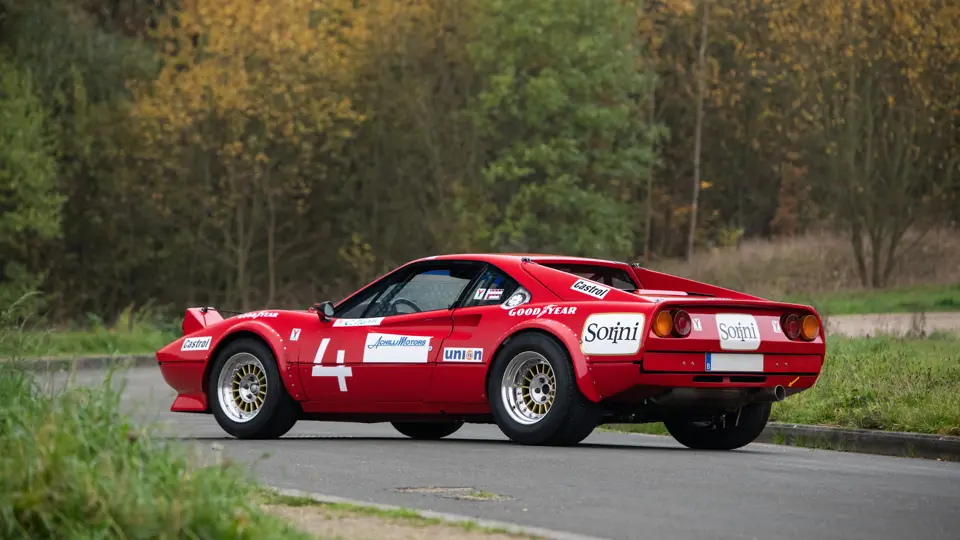



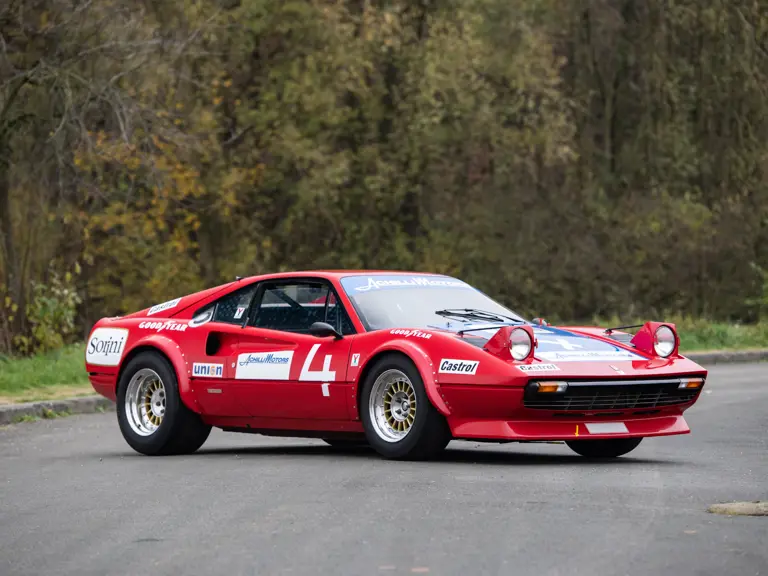
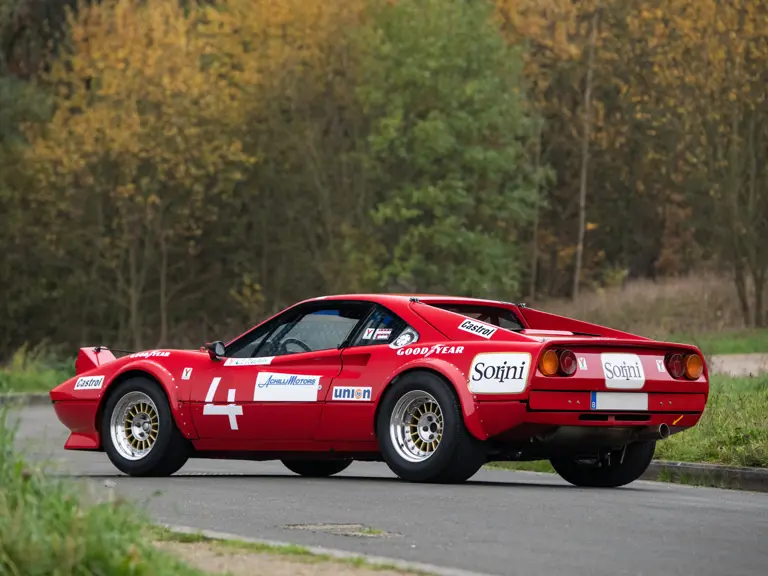
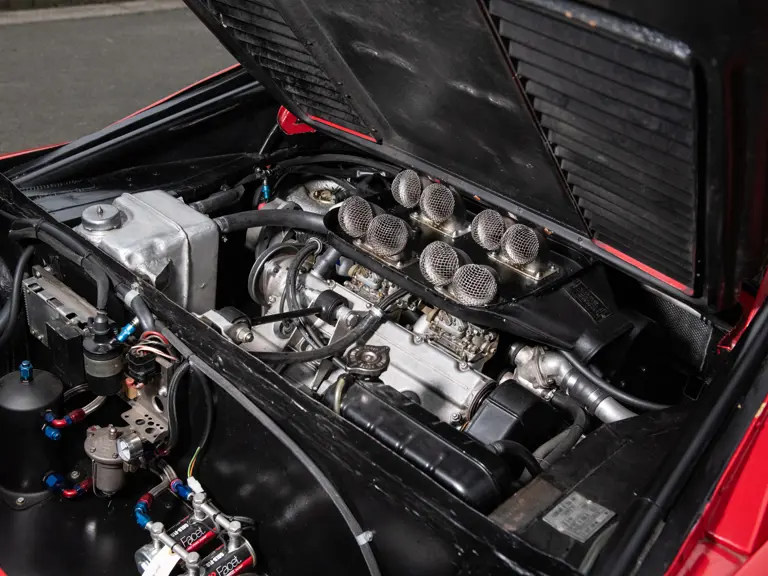
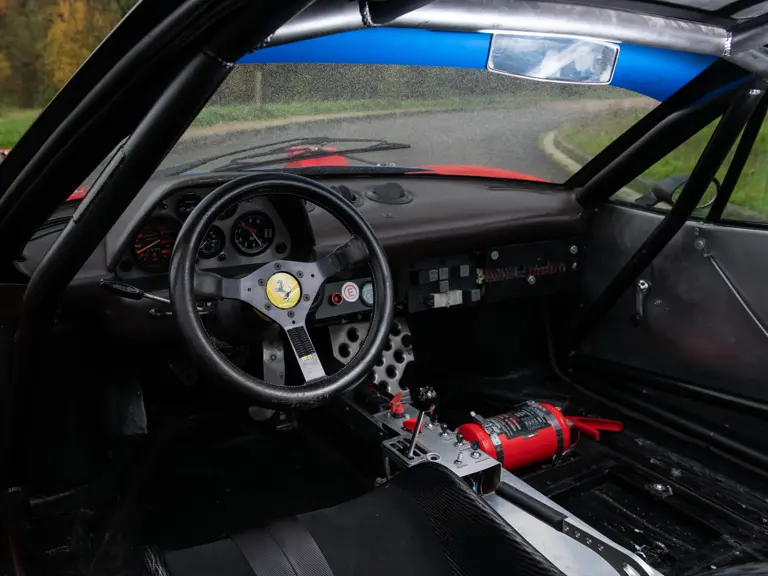
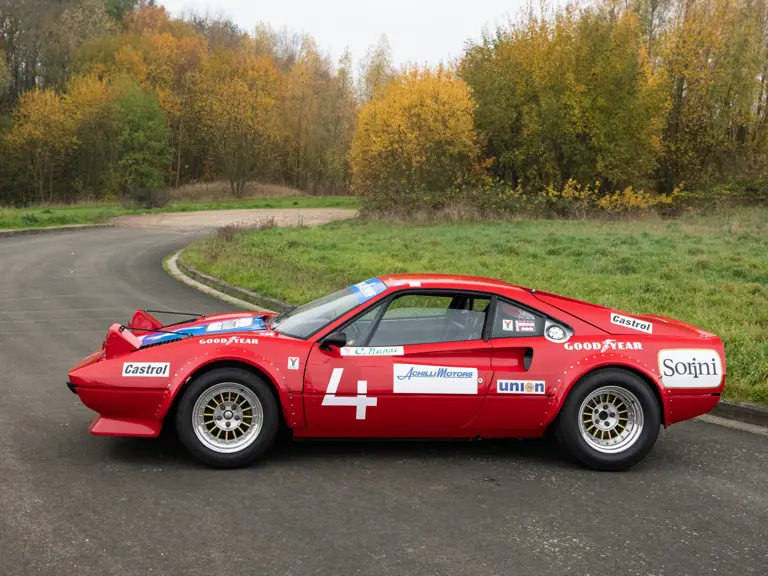
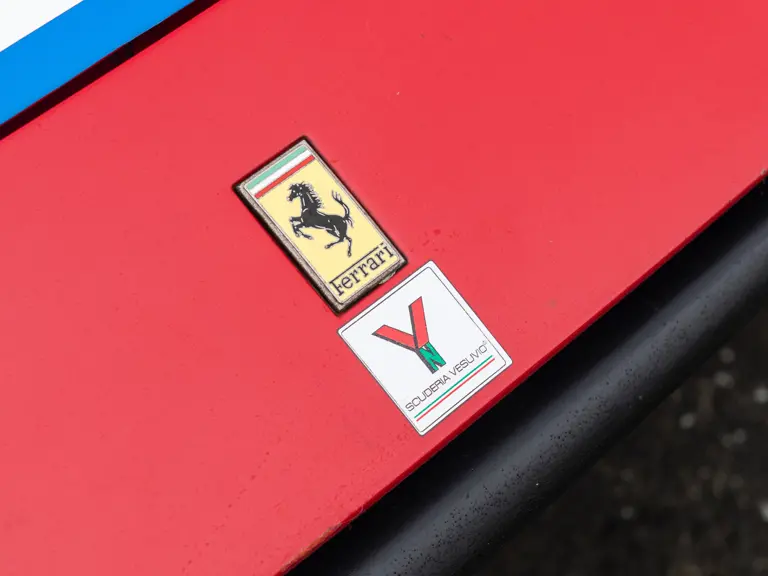
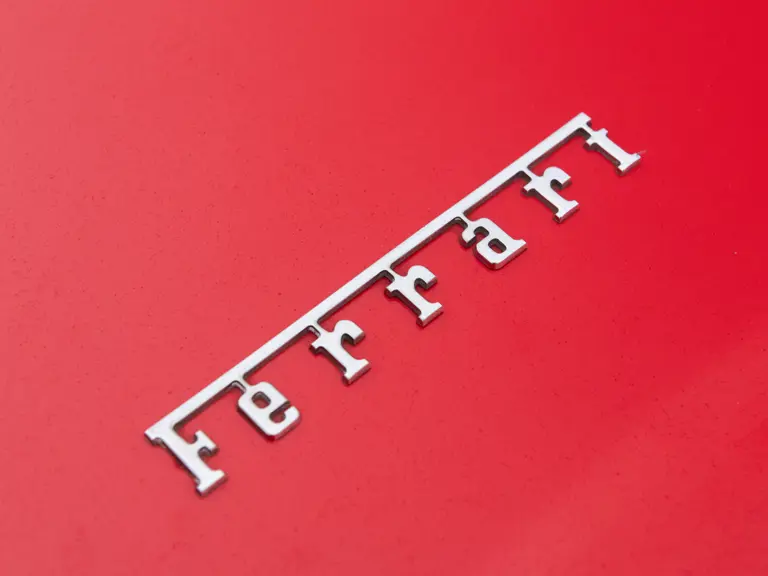
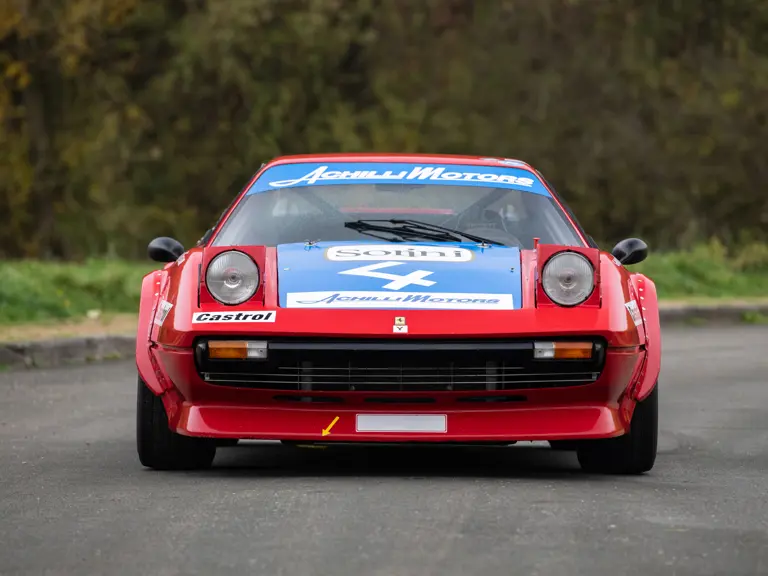
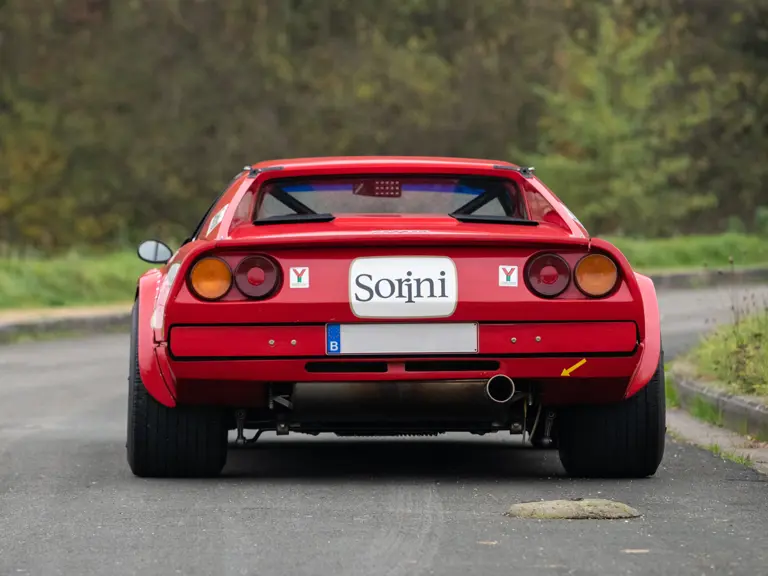
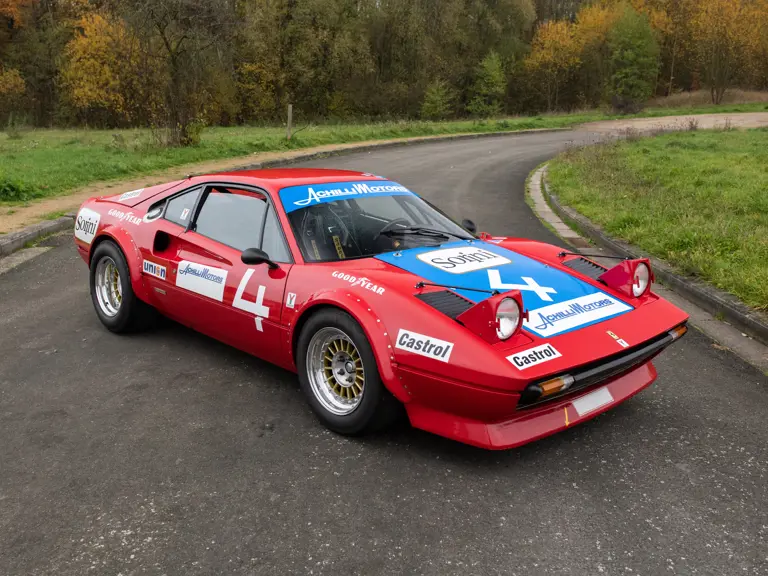
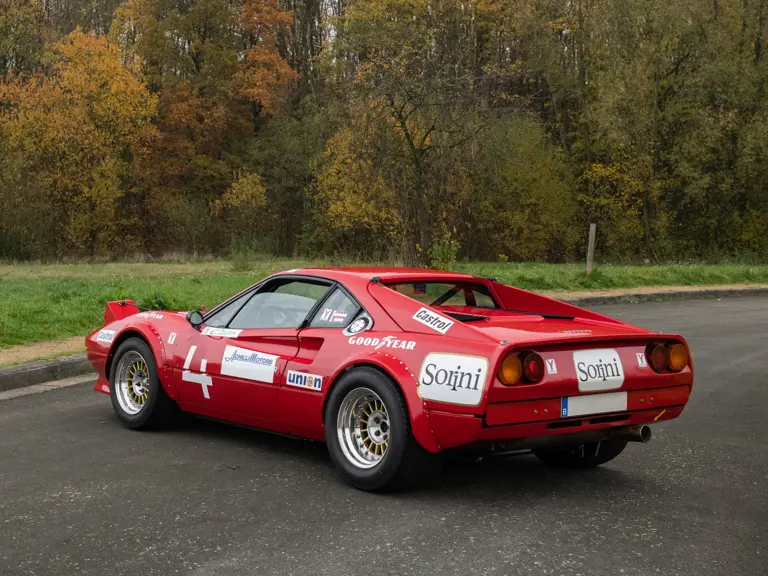
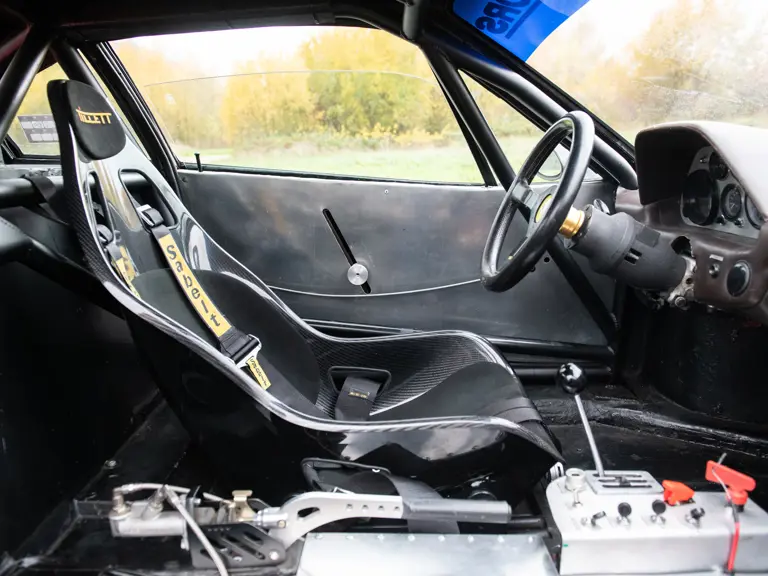

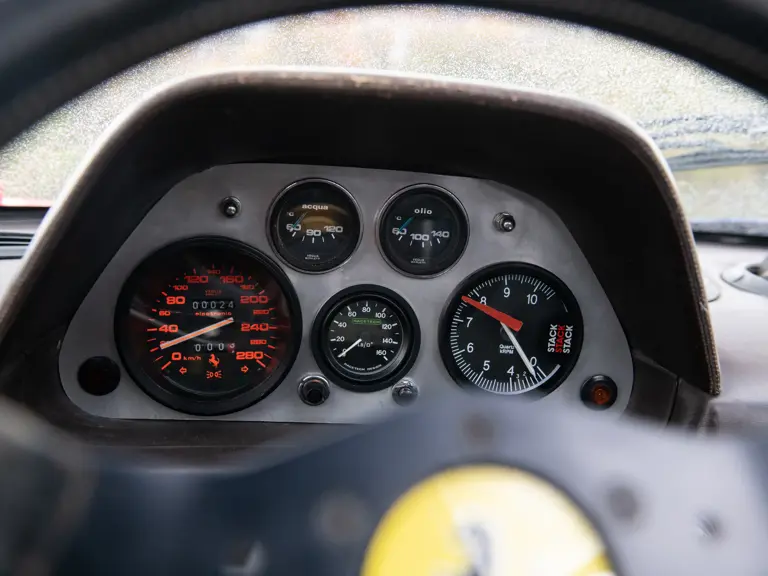

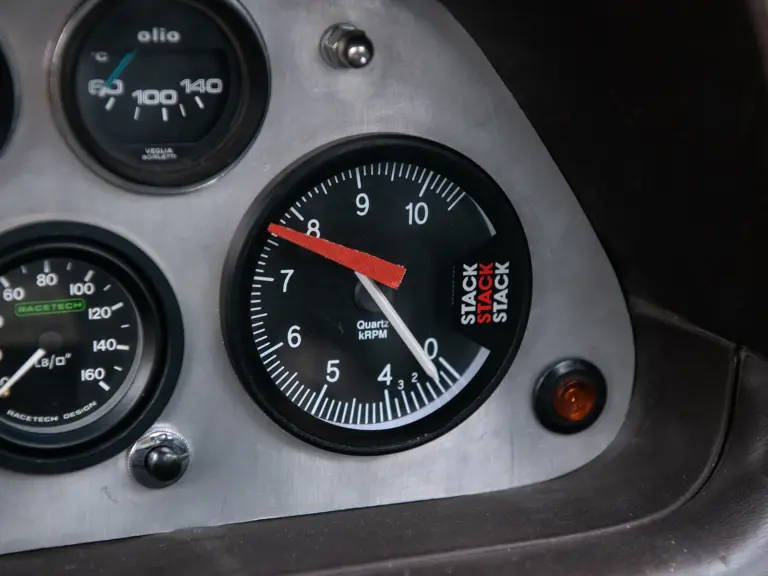
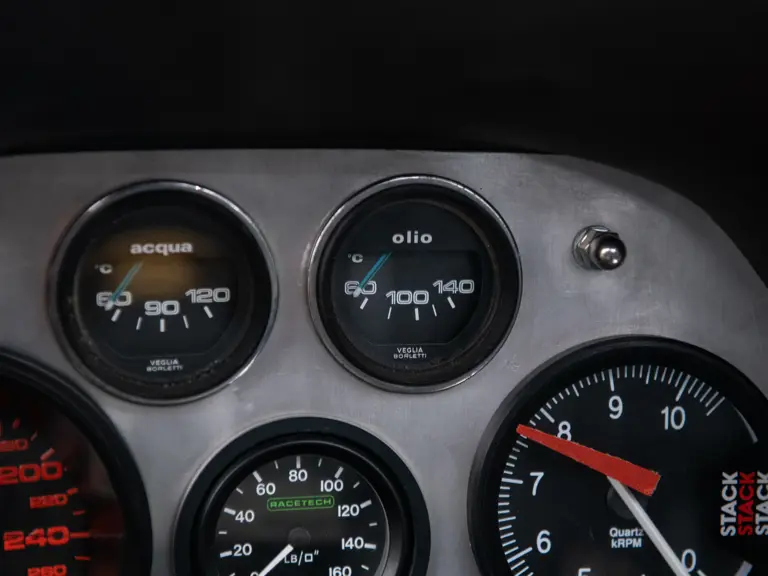

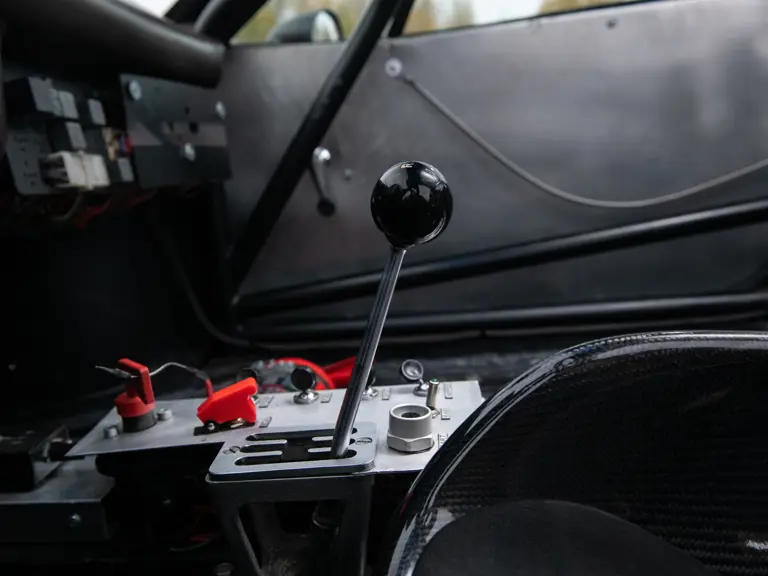



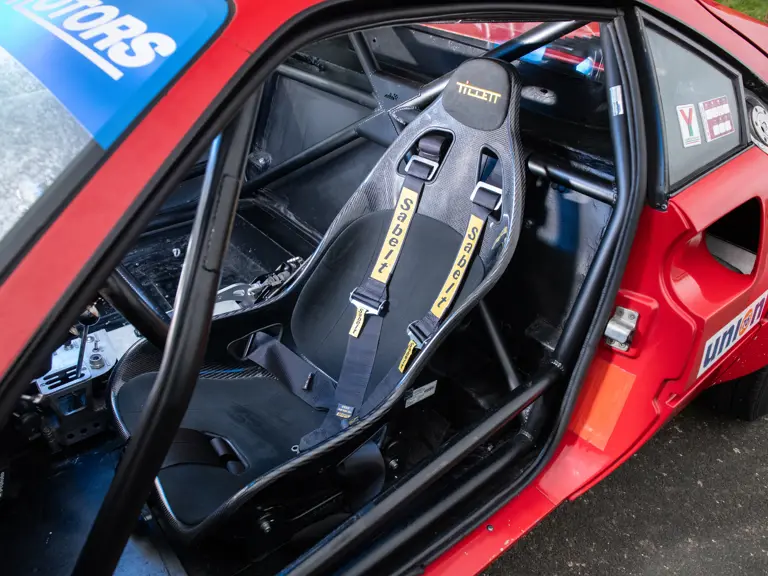
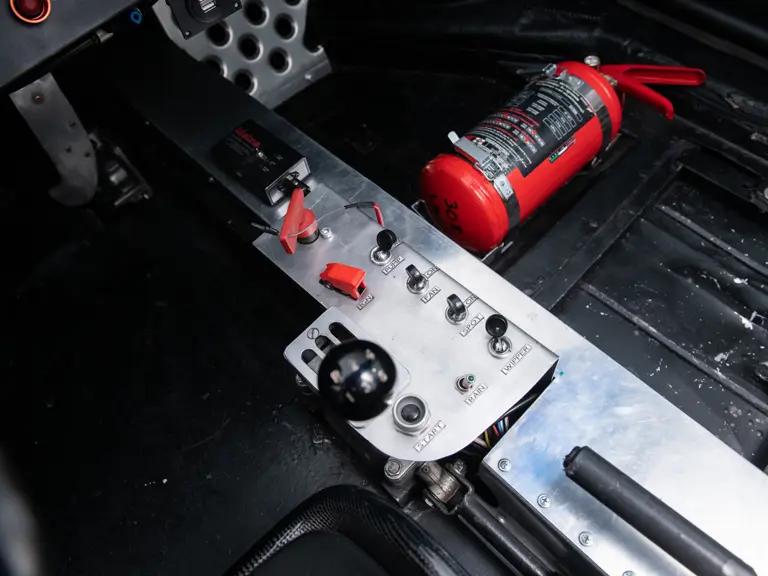

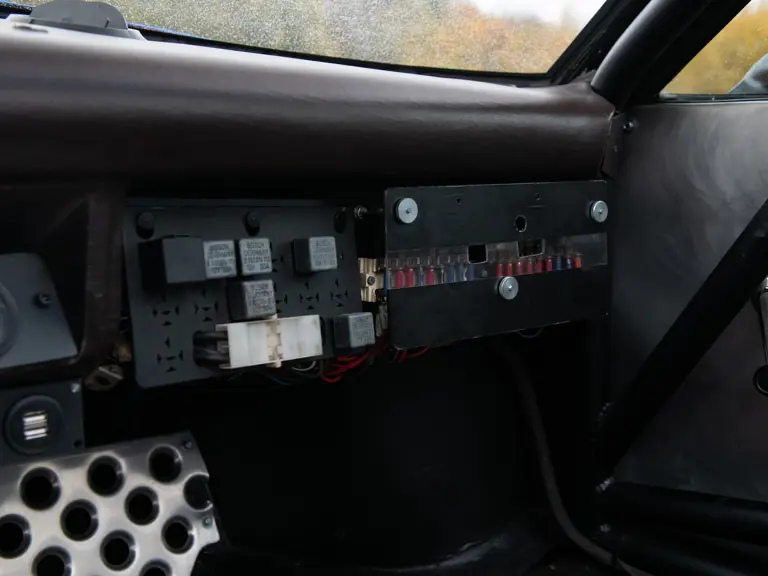

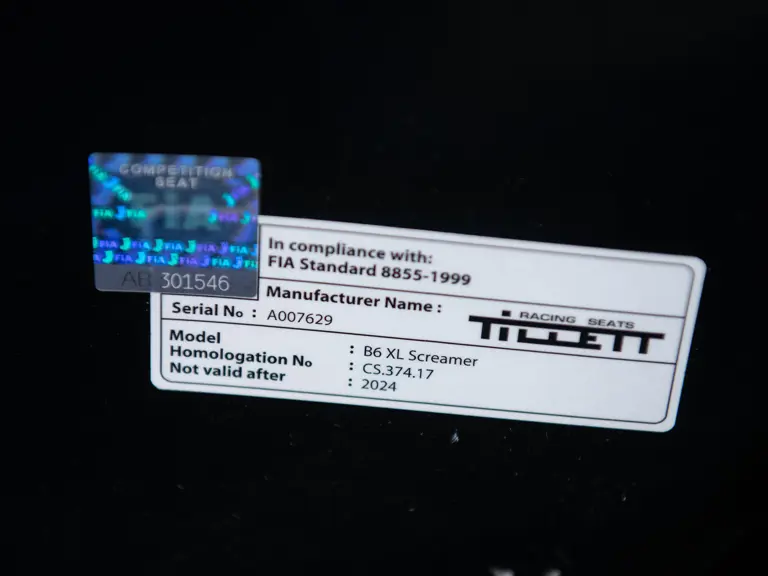
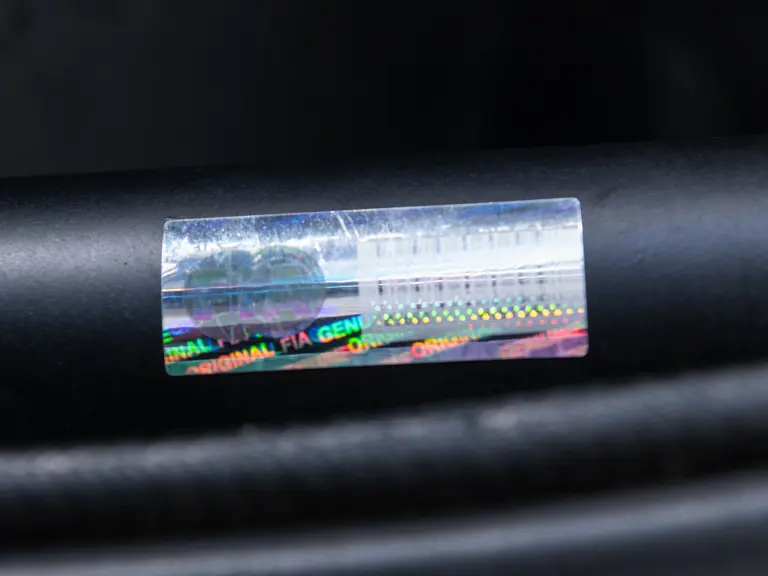

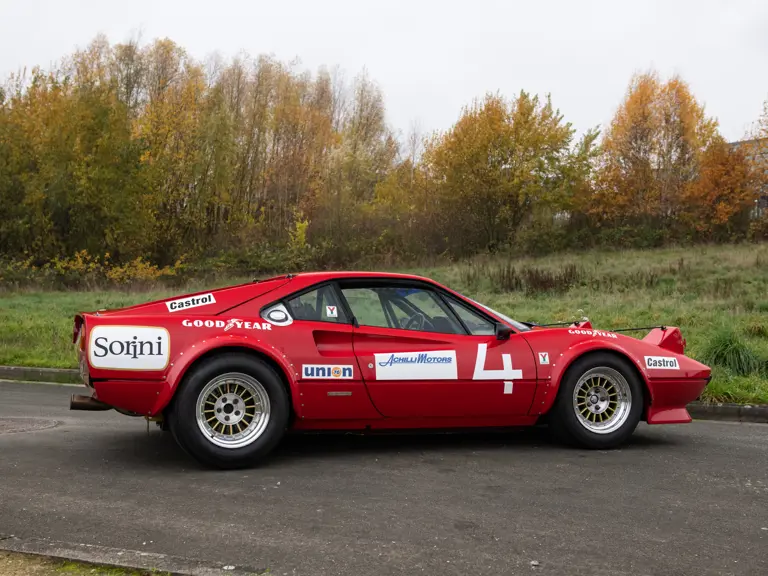
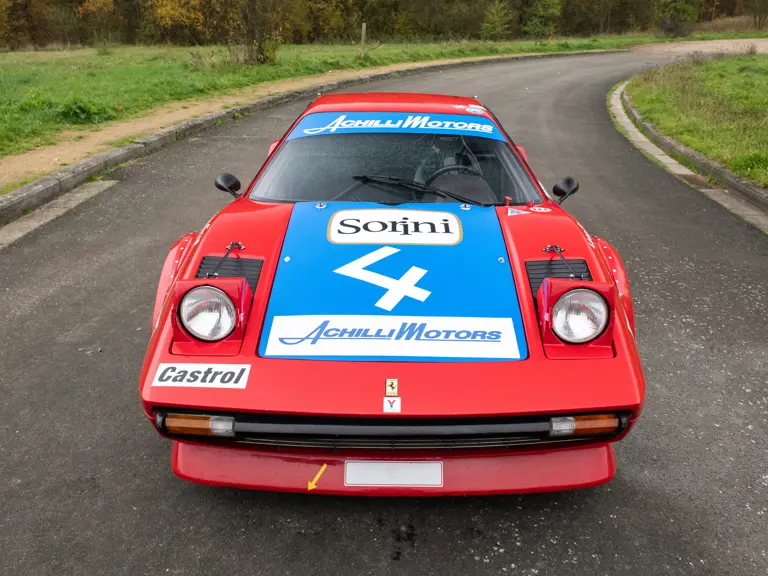
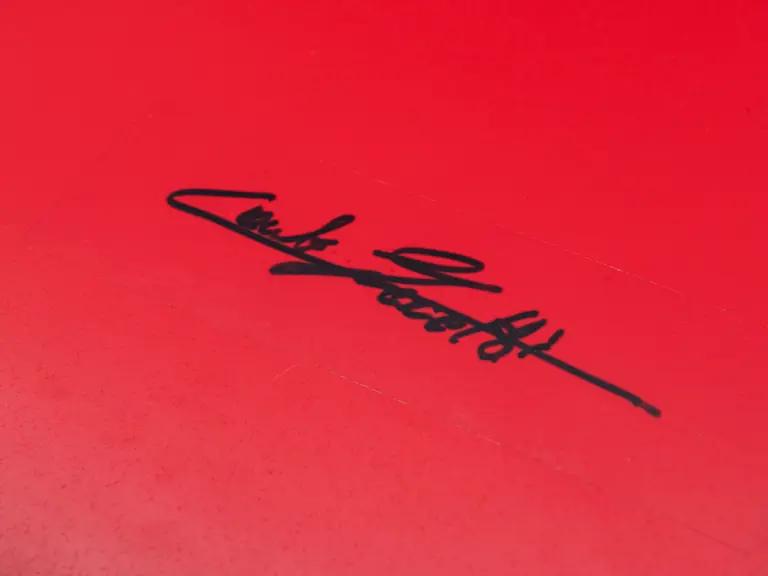
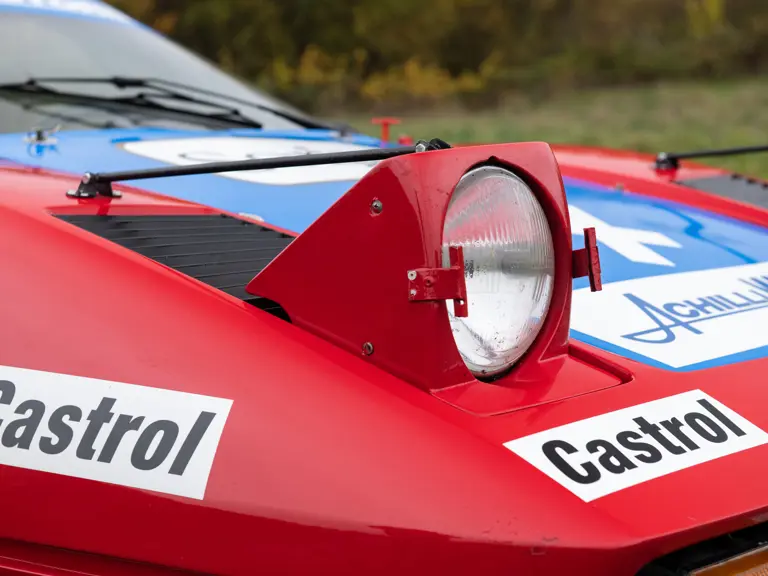
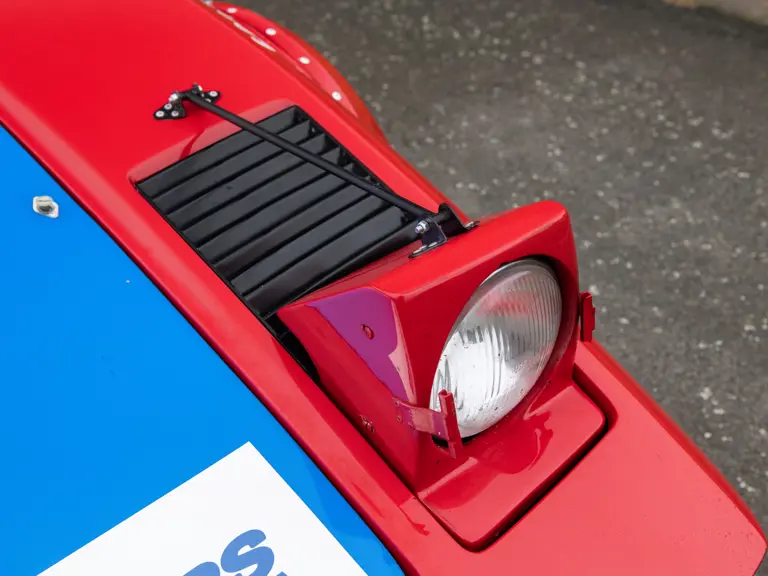
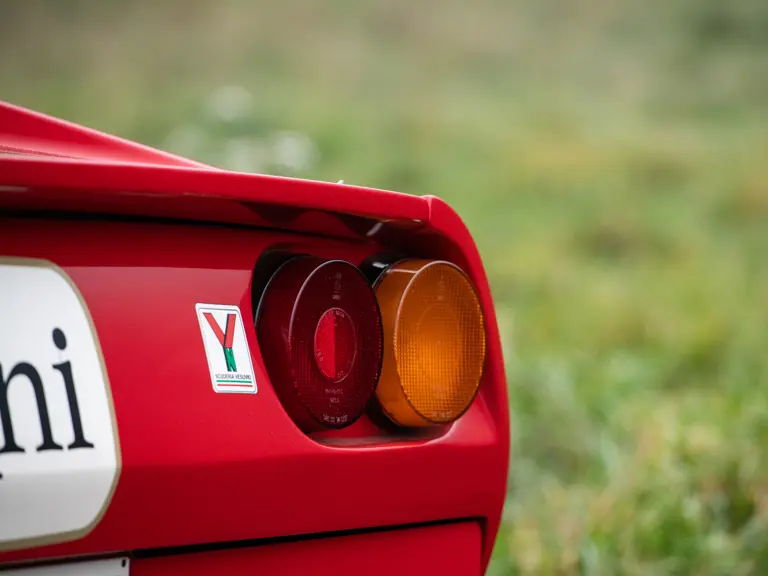
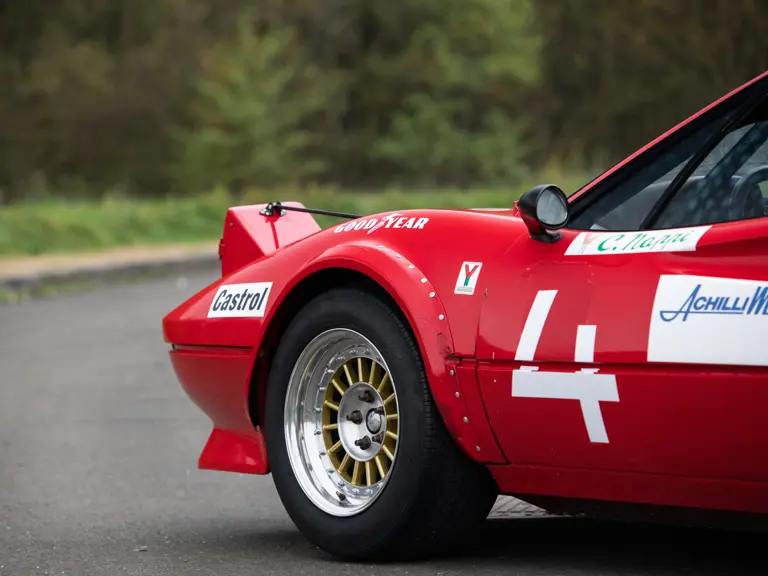
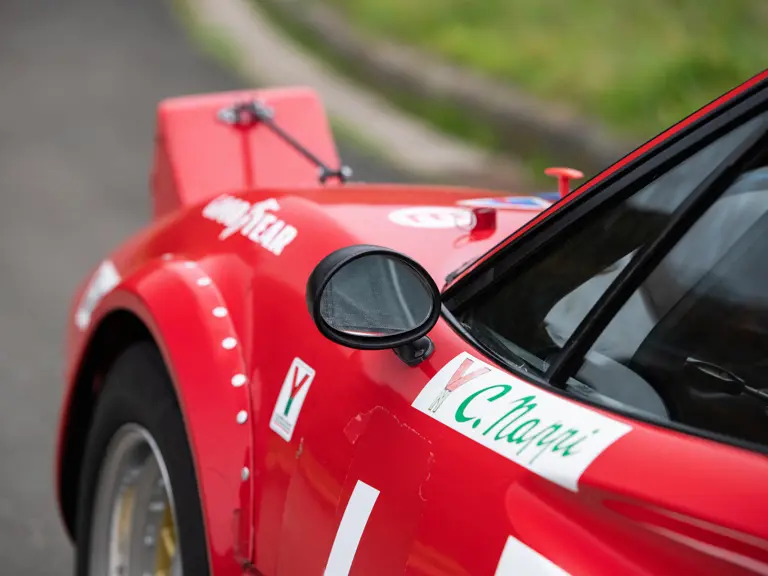
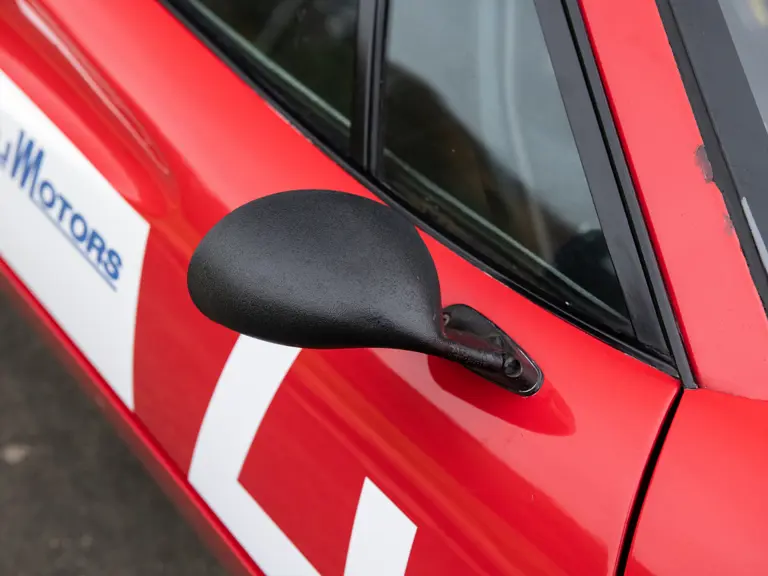
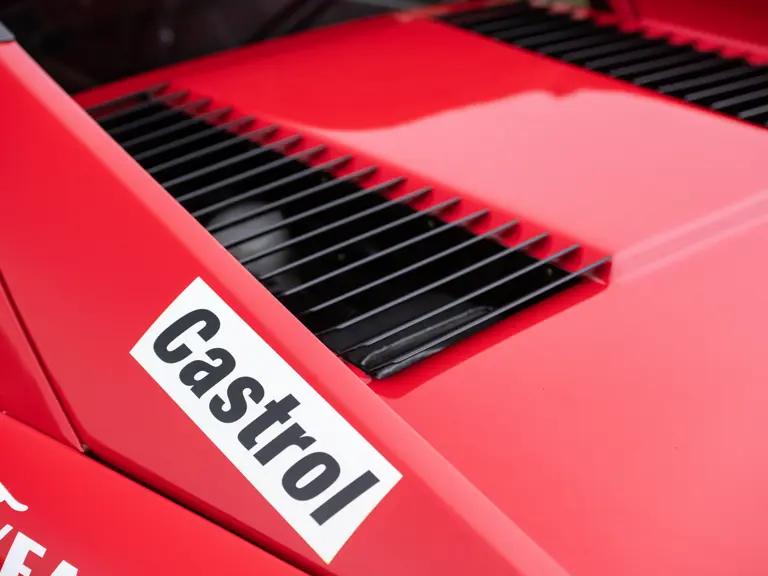
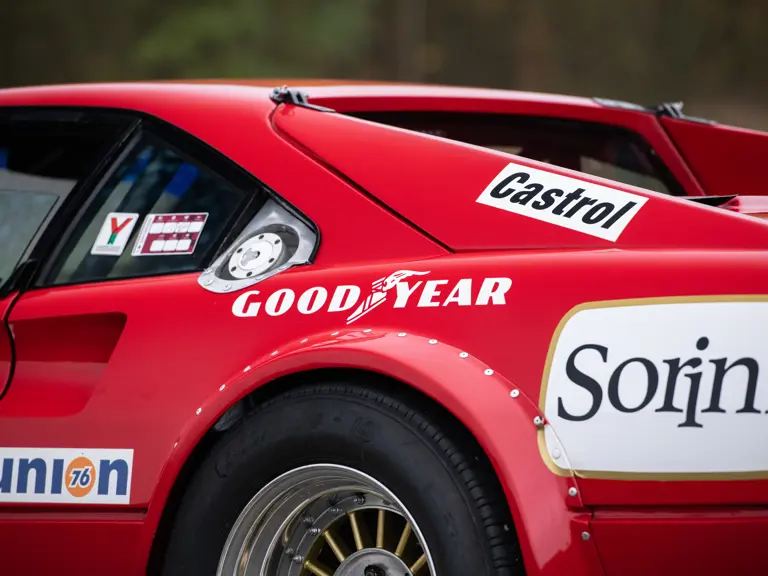
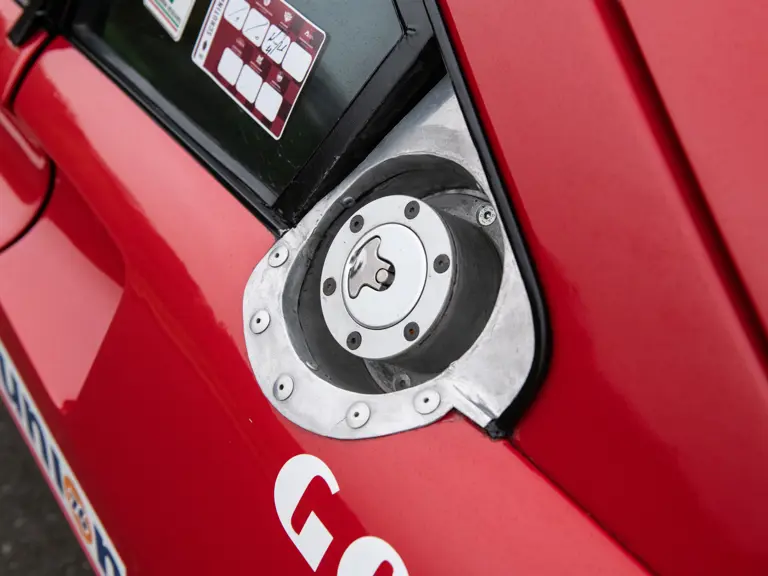
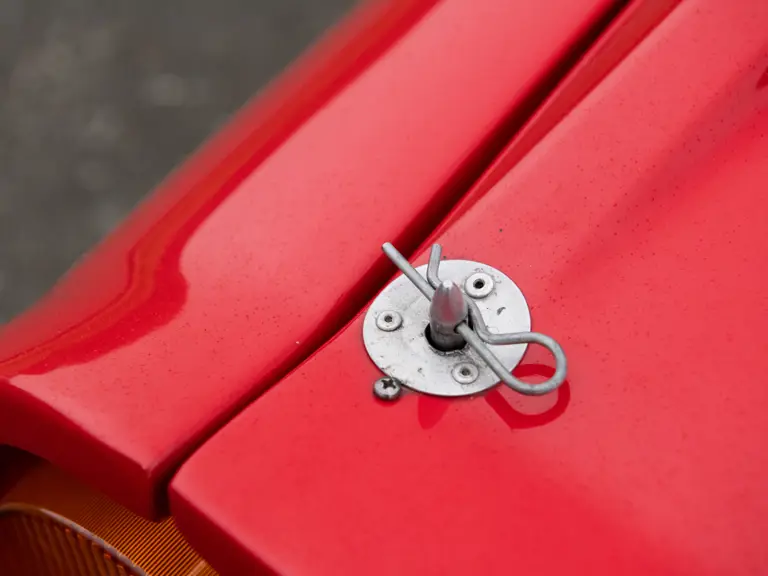


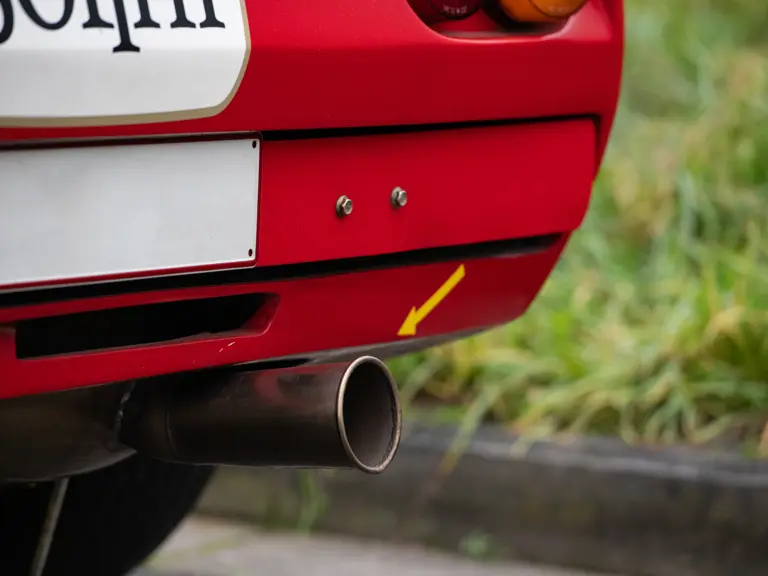
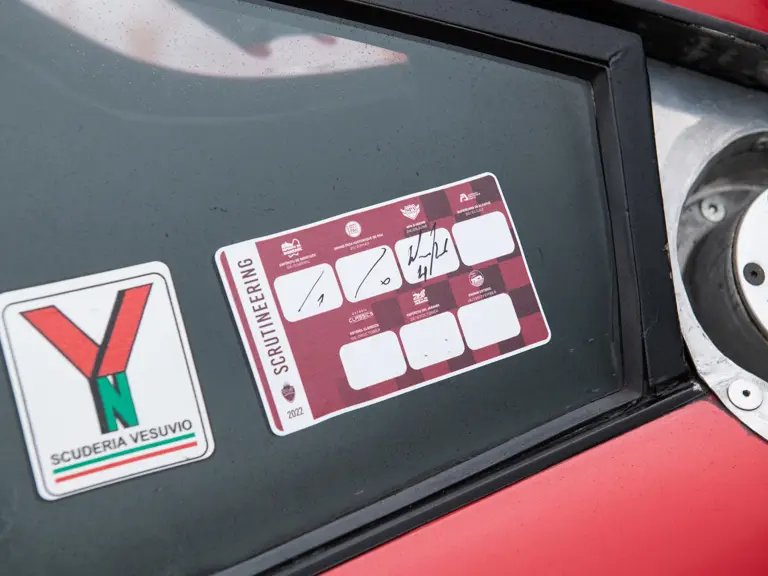
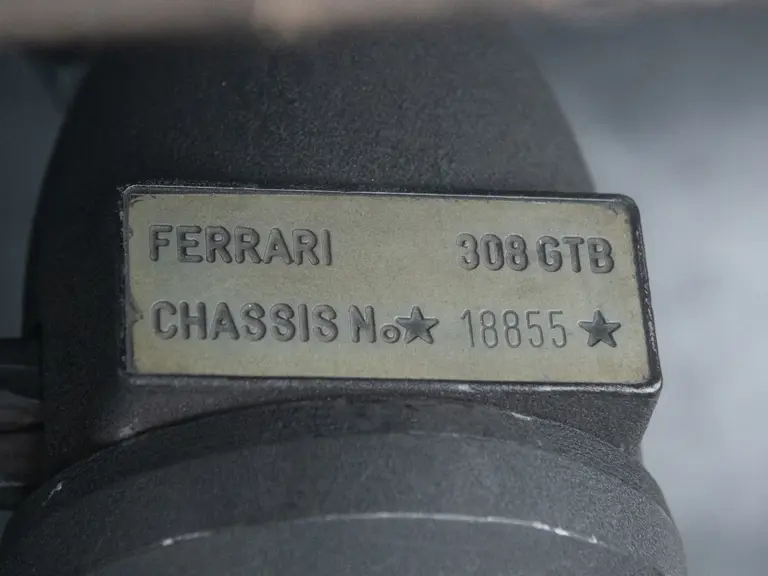
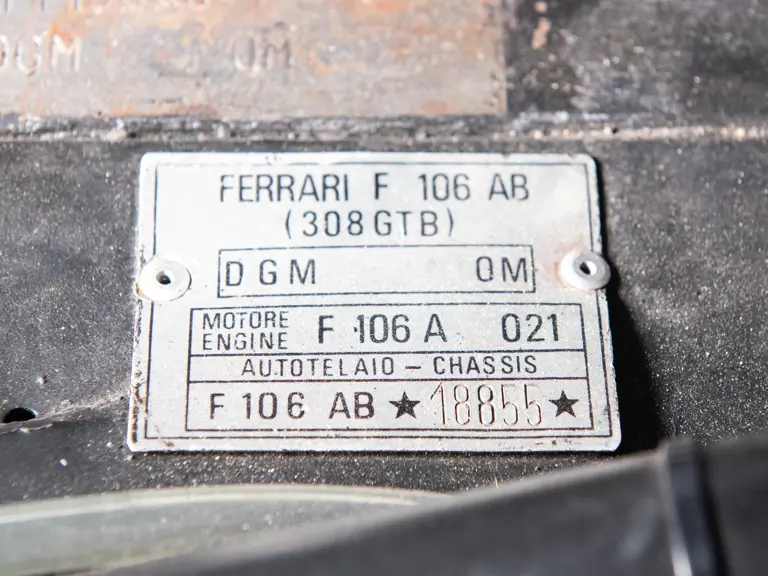
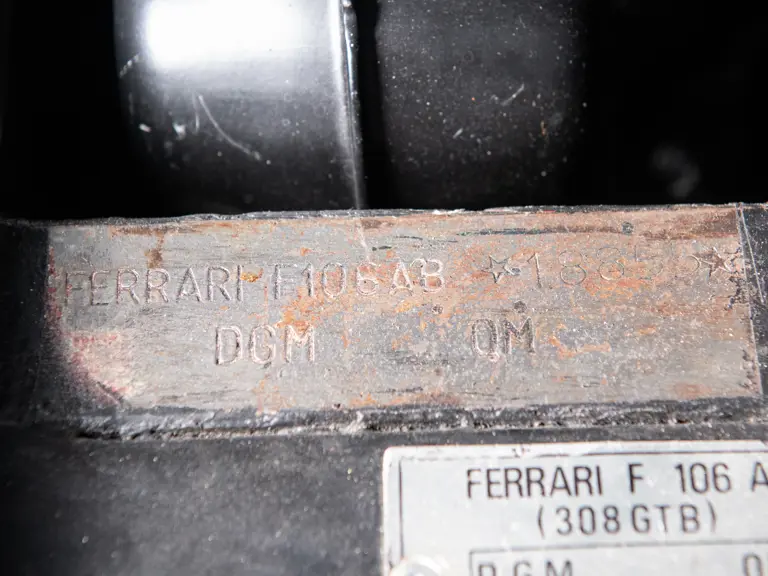



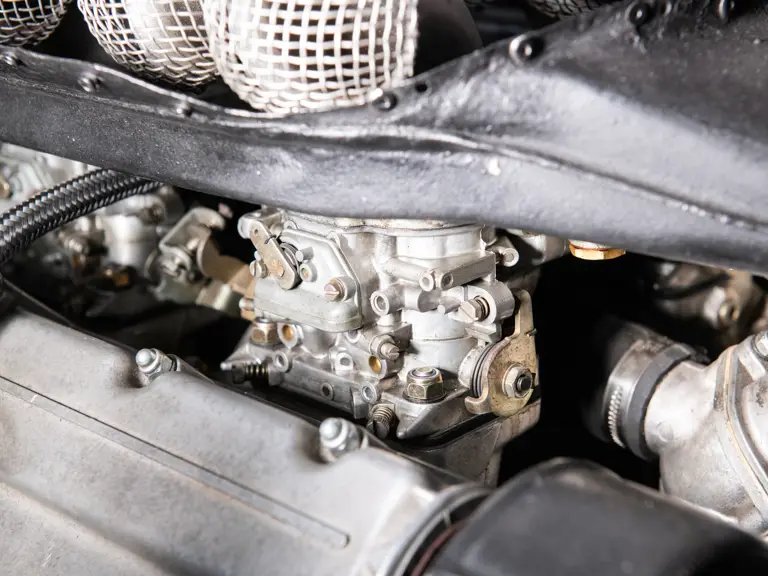

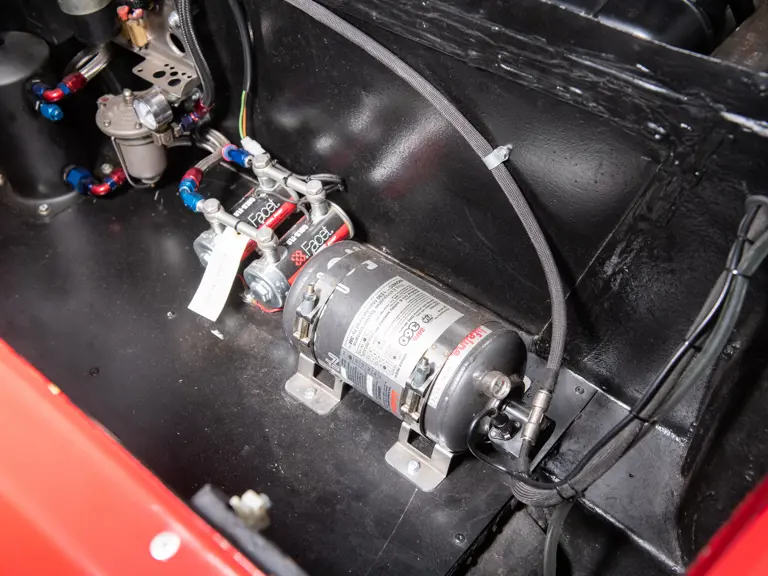
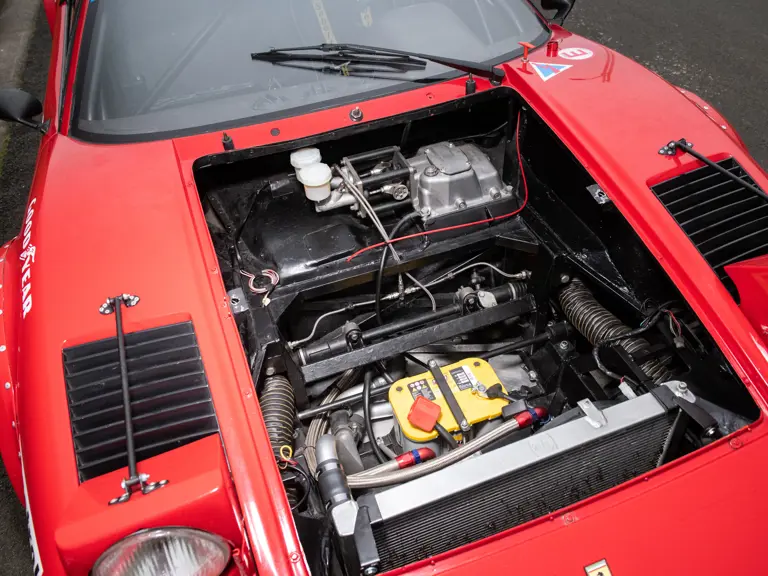
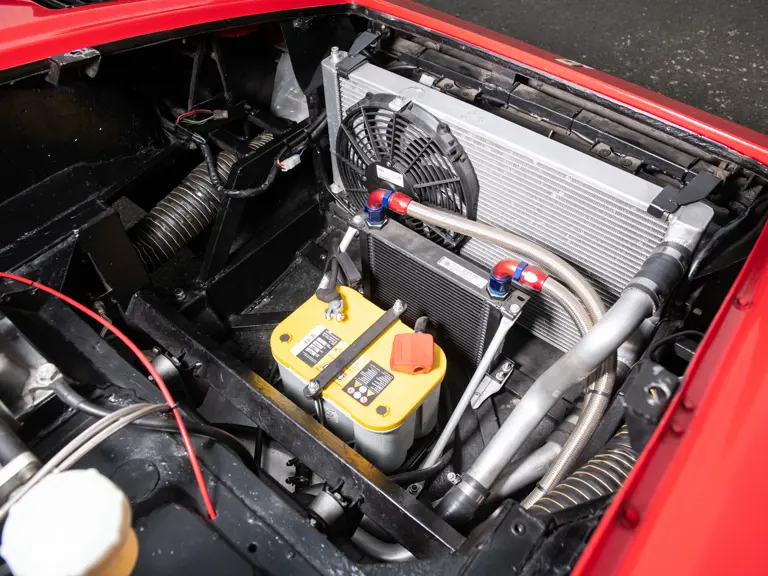
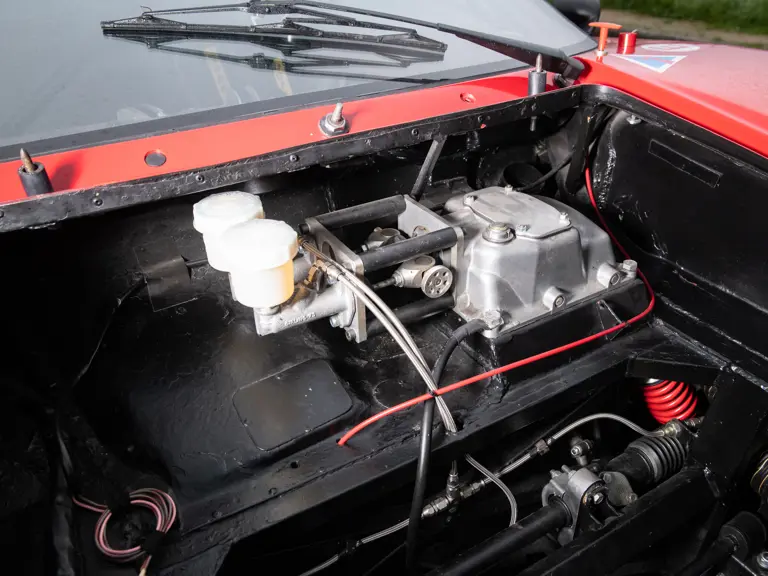
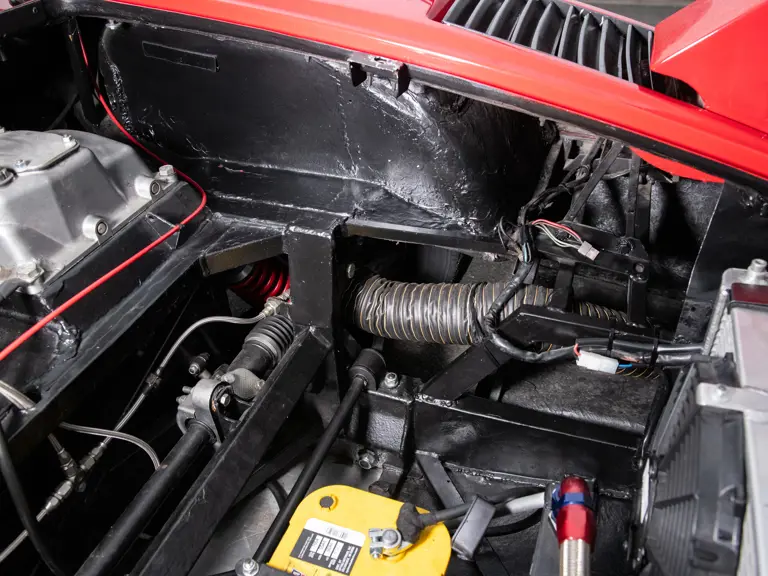
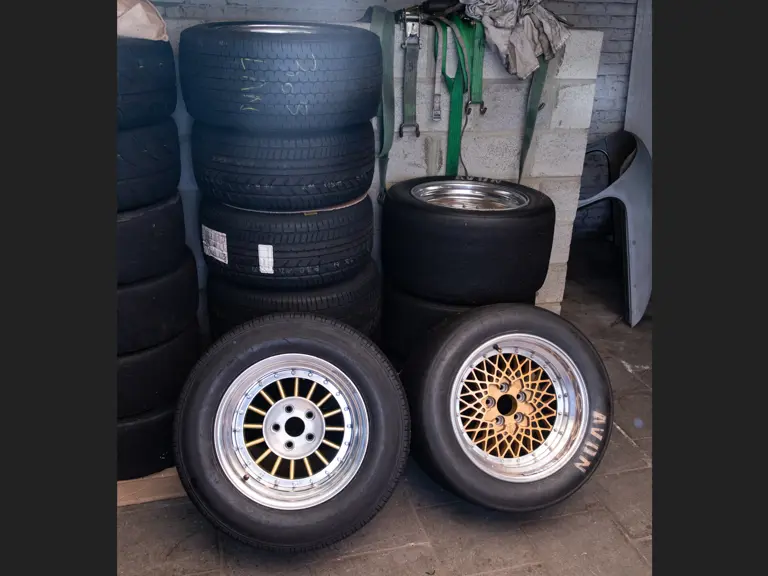
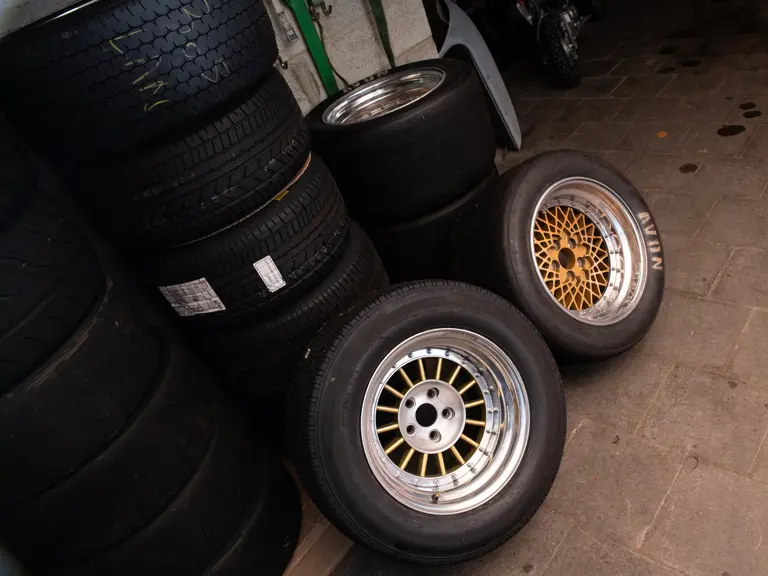
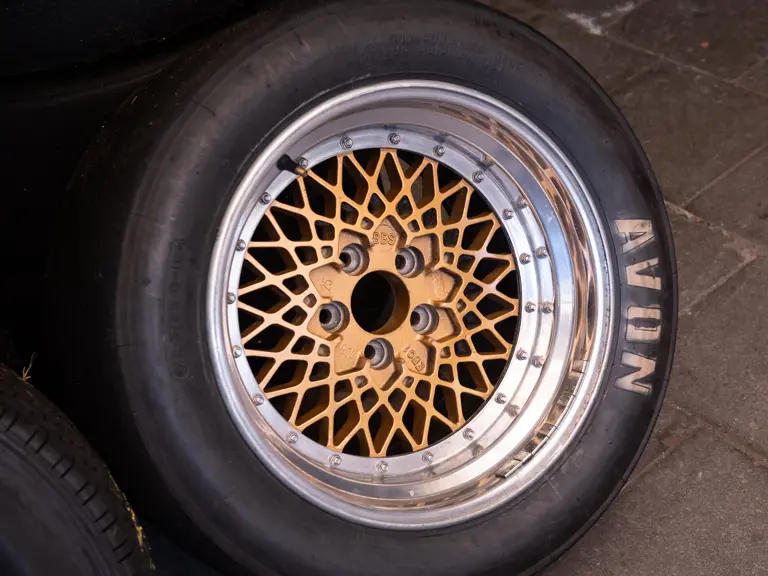

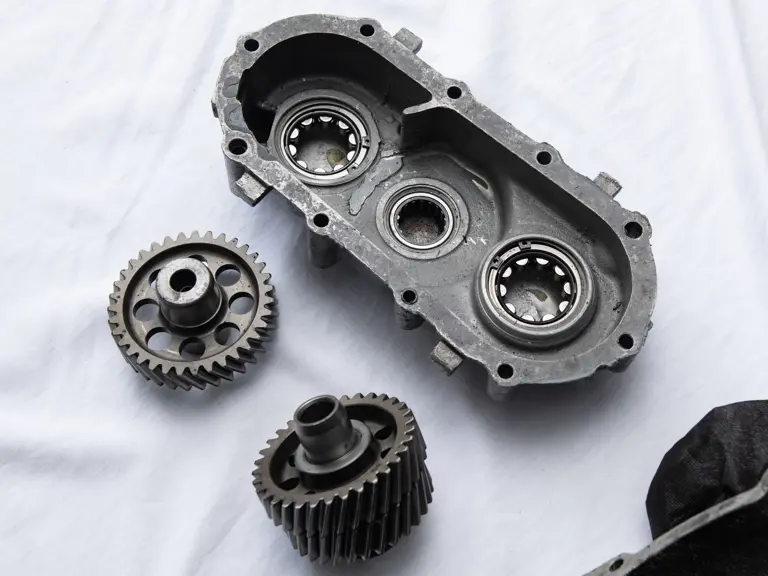

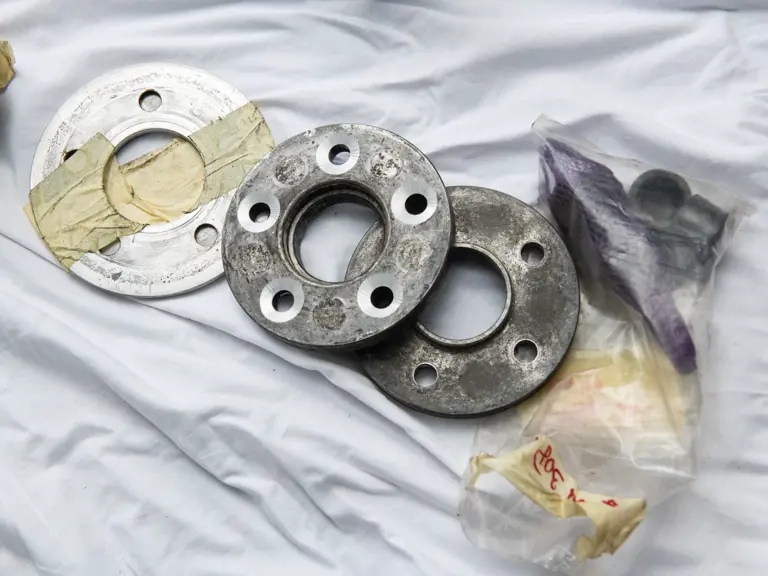
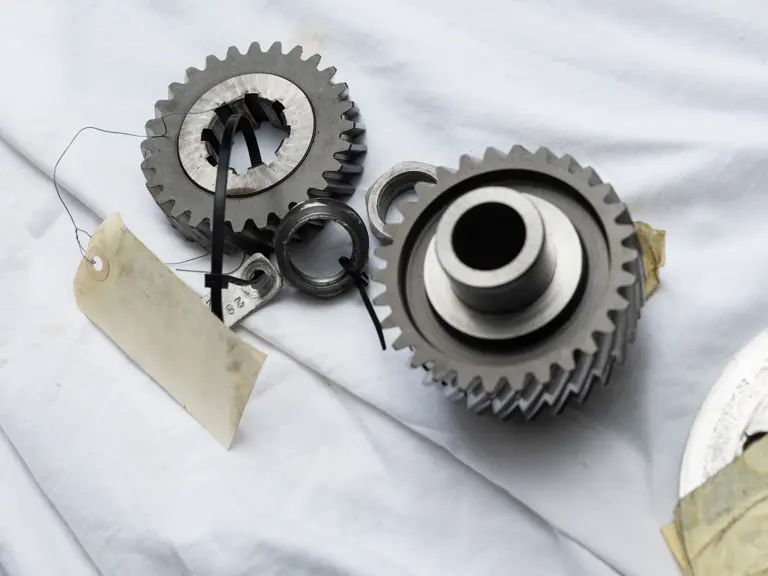
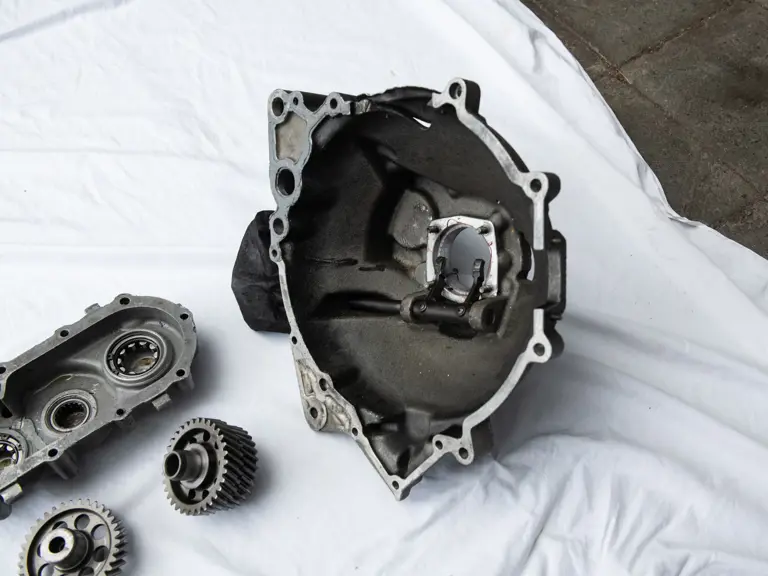

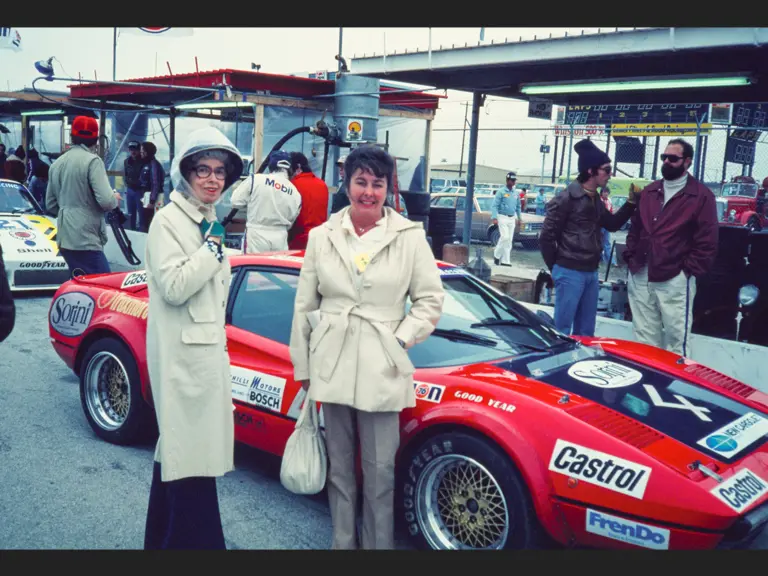
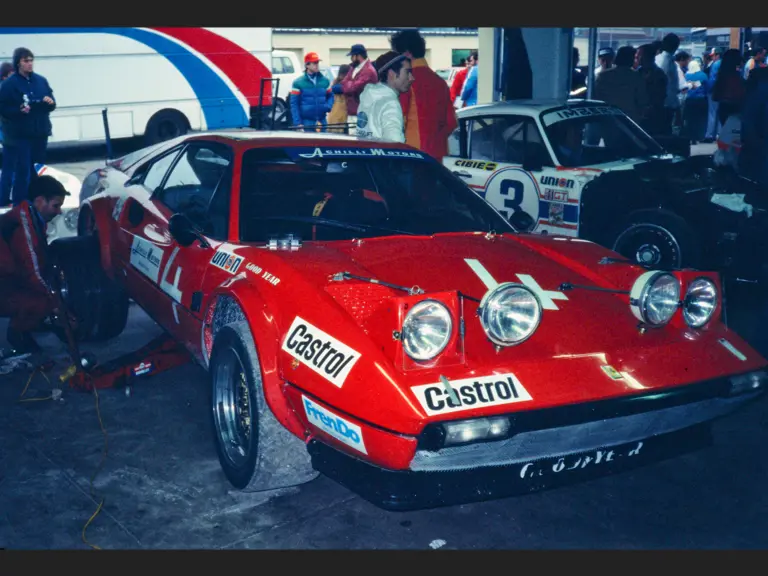

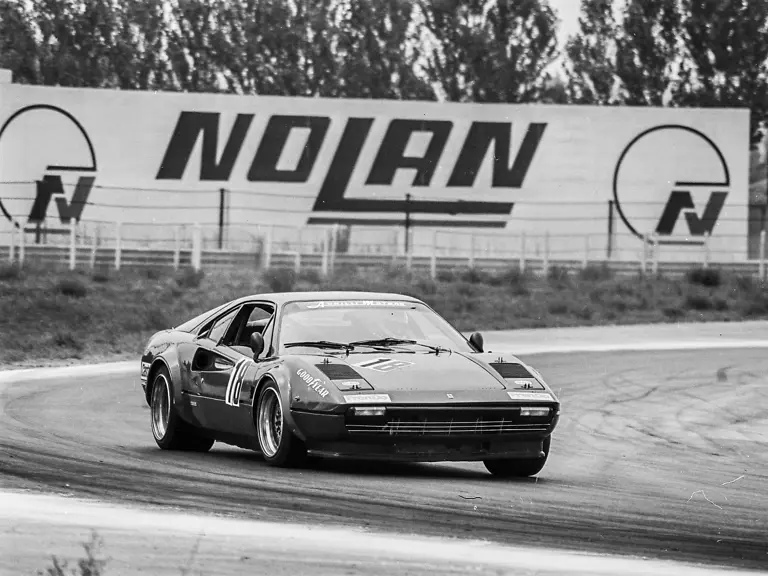

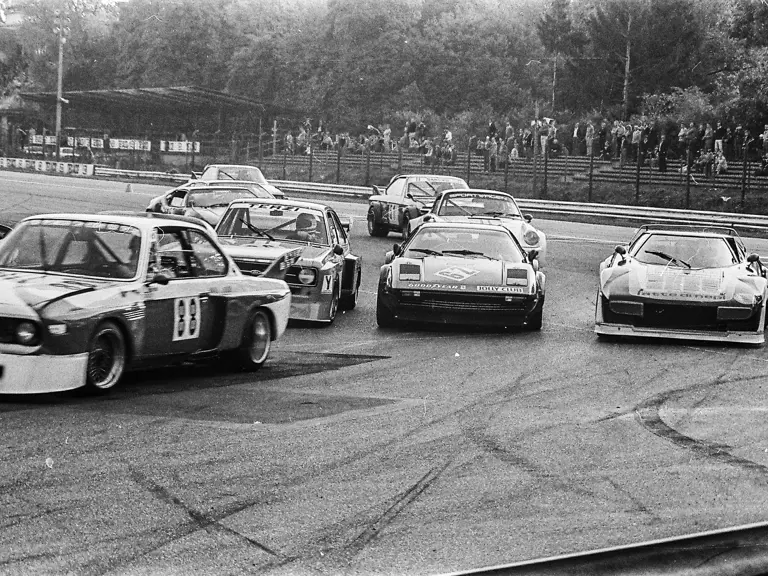
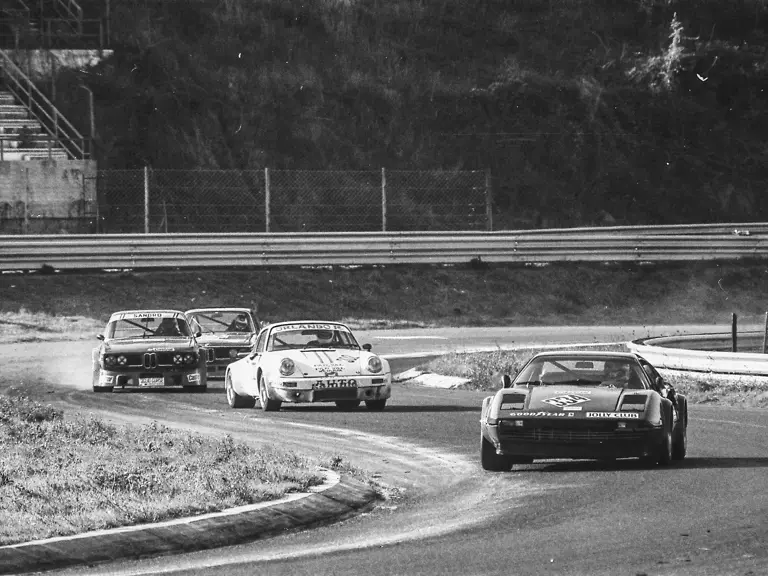
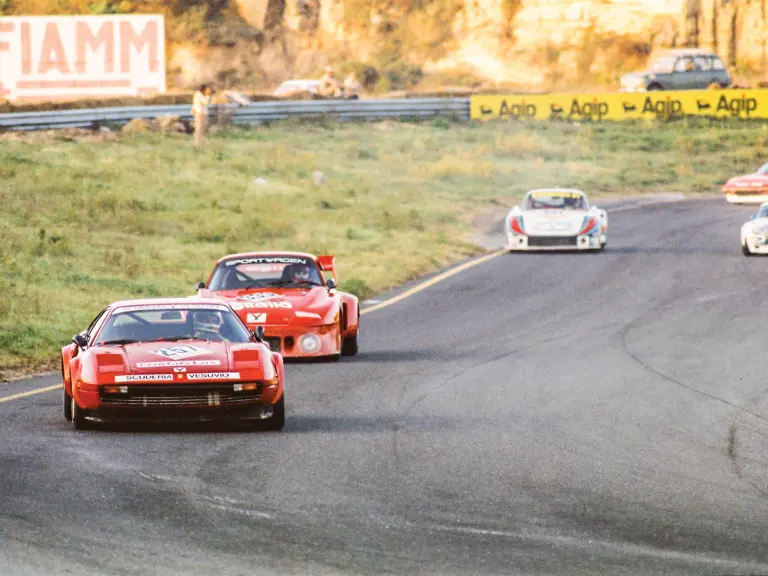
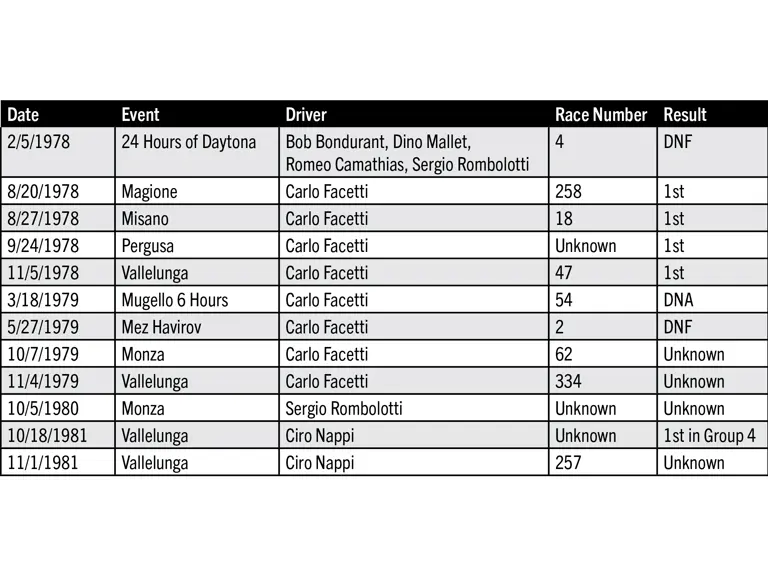
 | Paris, France
| Paris, France

